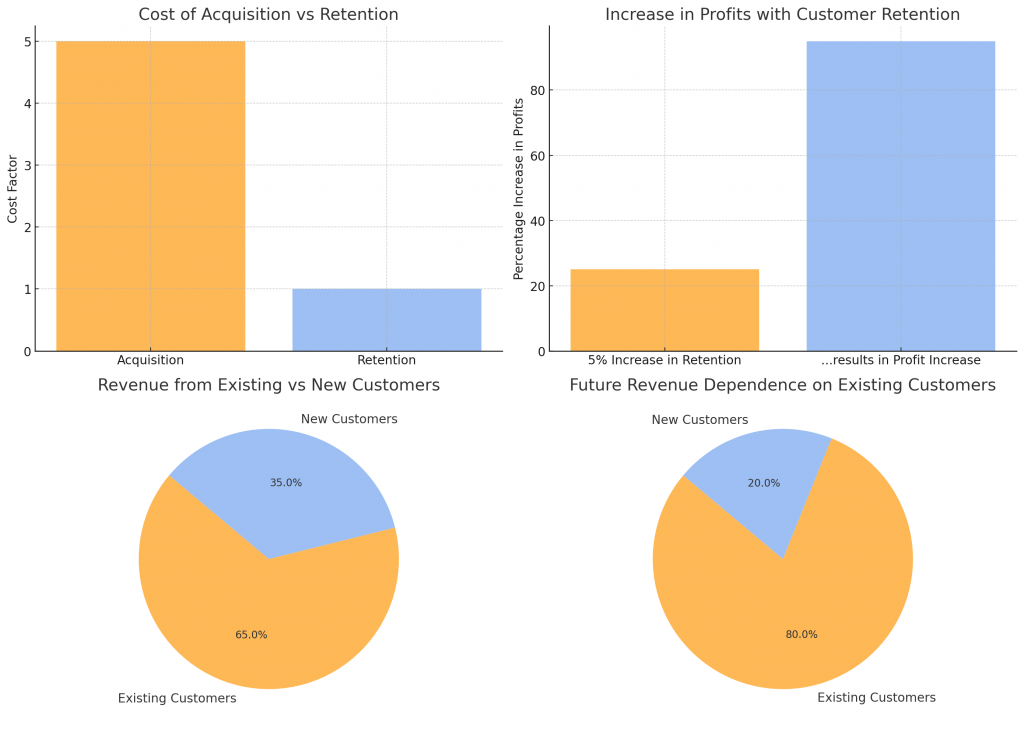
In the dynamic landscape of business, customer retention is as crucial as acquiring new ones. However, a significant challenge that companies face is customer churn or predicting customer churn, often a result of inadequate customer support and success strategies. This churn not only impacts the company’s revenue but also its reputation.
A primary reason many customers discontinue their association with a company is due to inadequate customer support and success. When customers feel neglected or dissatisfied with the service, their frustration builds up, eventually leading them to churn. This not only results in immediate revenue loss but also affects the long-term growth of the company.

Customer churn represents a significant cost to businesses, with companies losing an estimated $1.6 trillion per year due to customers taking their business elsewhere. Research shows it is 5 times more expensive to acquire a new customer than to retain an existing one. Moreover, improving customer retention by just 5% can boost profits by 25% to 95%, emphasizing the outsized impact of loyal customers on a company’s bottom line. In fact, 80% of future revenue is expected to come from just 20% of current customers. These figures underline the critical need for businesses to implement effective strategies to reduce customer churn.
The Gold Mine of Customer Communication
Customer communication is an untapped gold mine for understanding customer sentiments and behavior. Every interaction, whether it’s a support call, email exchange, or social media conversation, holds valuable insights about customer satisfaction and loyalty. By analyzing these interactions, companies can identify warning signs of churn. According to a report by McKinsey, companies that leverage customer analytics extensively are more likely to outperform their competitors in terms of profit almost twice as much.
A Game Changer in Customer Communication Analysis
Data Analysis and Insight Generation: AI algorithms are adept at processing vast amounts of communication data, identifying patterns, and extracting sentiments. This deep analysis can uncover underlying customer issues or dissatisfaction.
Predictive Analytics for Churn Prevention: Machine learning models applied to communication data enable AI to predict which customers are at risk of churning. Indicators such as the tone of communication, frequency of complaints, and engagement levels are key predictors in this analysis.
Enhanced Personalization: AI allows for the customization of communication and services based on individual customer interactions and history. Personalized experiences are known to boost customer satisfaction and loyalty, thereby reducing churn likelihood.
Real-Time Interaction Analysis: AI tools can analyze customer interactions as they happen, offering immediate insights. This capability allows businesses to proactively address issues in real time, preventing them from escalating into reasons for churn.
One of the most significant advantages of using AI in analyzing customer communication is the ability to predict churn early. Early prediction is crucial in the fight against churn, as it provides businesses with a valuable window of opportunity to act before a customer decides to leave. When churn risks are identified early, companies can implement targeted interventions tailored to individual customer needs and concerns.
Conclusion
The integration of AI in analyzing customer communication is a critical step for businesses aiming to understand and predict customer behavior. This approach not only helps in identifying potential churn but also enables companies to proactively enhance customer experiences. In today’s competitive market, utilizing AI in customer communication is essential for businesses seeking to reduce churn and build lasting customer relationships.
Start leveraging AI today and mitigate customer churn. Visit our website or reach out to us at sales@convosense.ai
